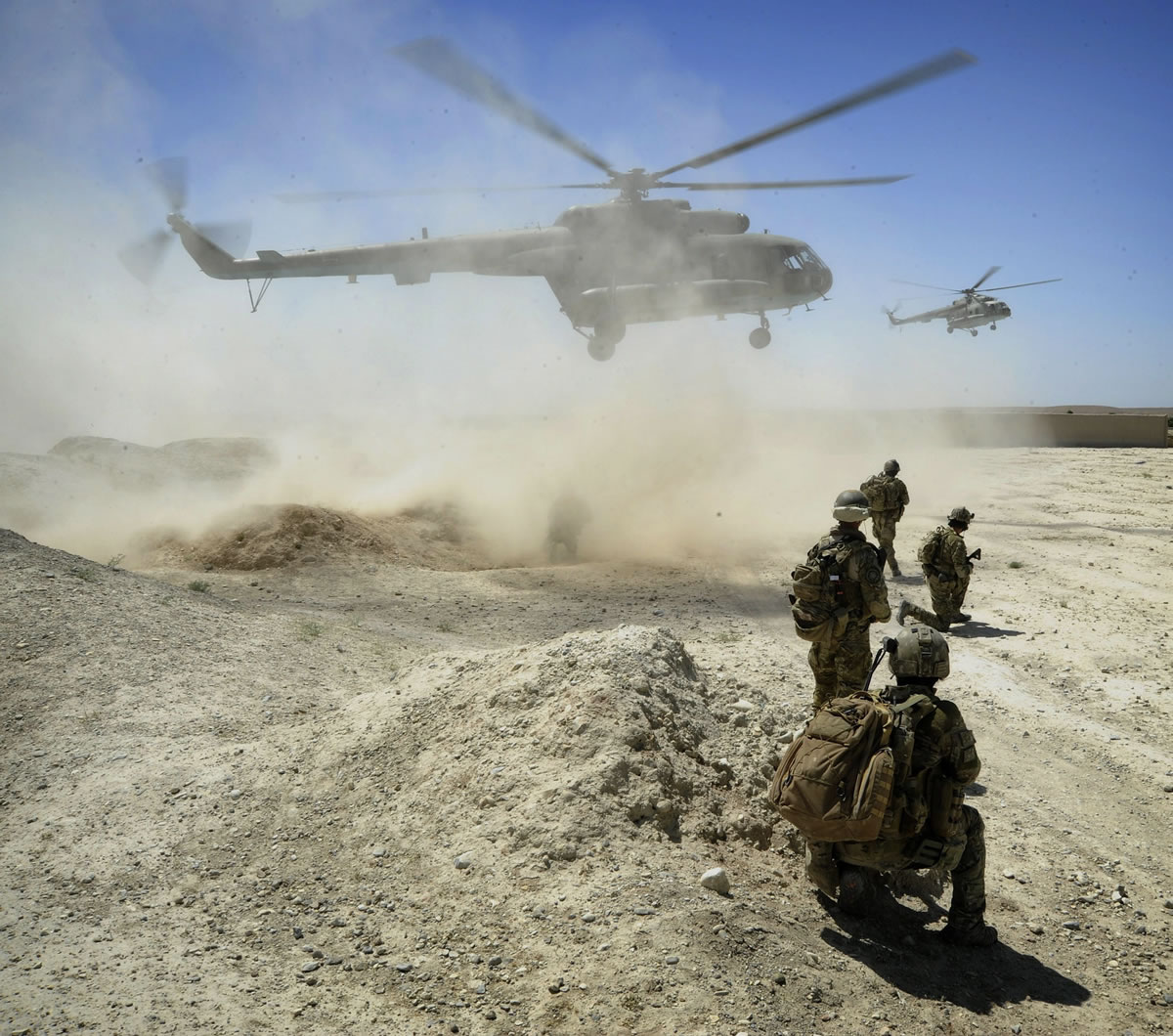WASHINGTON — The deal looked sketchy from the start.
To outfit Afghanistan’s security forces with new helicopters, the Pentagon bypassed U.S. companies and turned instead to Moscow for dozens of Russian Mi-17 rotorcraft at a cost of more than $1 billion.
Senior Pentagon officials assured skeptical members of Congress that the Department of Defense had made the right call. They repeatedly cited a top-secret 2010 study they said named the Mi-17 as the superior choice.
Turns out the study told a very different story, according to unclassified excerpts obtained by The Associated Press.
The U.S. Army’s workhorse Chinook, built by Boeing in Pennsylvania, was found to be “the most cost-effective single platform type fleet for the Afghan Air Force over a twenty year” period, according to the excerpts.
Lawmakers who were following the copter deal were stunned.
Sen. John Cornyn of Texas, the Senate’s No. 2 GOP leader and one of the most vocal critics of the contract, said the Defense Department “repeatedly and disingenuously” used the study to prove the necessity of buying Mi-17s.
More than two years since the Mi-17 contract was signed, a veil of secrecy still obscures the pact despite its high-dollar value, the potential for fraud and waste, and accusations the Pentagon muffled important information.
The unprecedented arms deal also serves as a reminder to a war-weary American public that Afghanistan will remain heavily dependent on U.S. financial support even after its combat troops depart.
“So why are we buying Russian helicopters when there are American manufacturers that can meet that very same requirement?” Cornyn asked.
As recently as September, Deputy Defense Secretary Ashton Carter cited the study in a letter to House members defending the decision. Carter left his job this past week.
Last year, Frank Kendall, the Pentagon’s top acquisition official, and policy chief James Miller pointed to the study in a written response to questions posed by Cornyn.
Just a few weeks after the secret study was completed, Army Secretary John McHugh wrote in a 2011 memo “that the Mi-17 stands apart” when compared with other helicopters.
The Pentagon denies it misled Congress.
A senior department official said the study was focused on long-term requirements and not the immediate needs of the Afghan military, which were best met by the Mi-17. Also, U.S. commanders in Afghanistan wanted the Mi-17 because it is durable, easy-to-operate and the Afghan forces had experience flying it, according to the official, who was not authorized to be identified as the source of the information.
There’s no dispute that heavy-duty helicopters capable of quickly moving Afghan troops and supplies are essential to accomplishing that mission. But the decision to acquire them from Russia has achieved the rare feat in a deeply divided Congress of finding common ground among Republicans and Democrats.
Lawmakers from both political parties have demanded to know why the U.S. was purchasing military gear from Russia.



